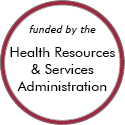Rural Project Examples: Health workforce education and training
Other Project Examples
Rural Nevada EMS Conference
Updated/reviewed January 2025
- Need: To provide rural Nevada EMS personnel an opportunity to receive quality training and current EMS information from national EMS educators.
- Intervention: The Rural Nevada EMS Conference offers continuing education units and engaging sessions for EMS personnel.
- Results: In 2024, 185 individuals attended the conference in-person.
Marshall University Rural Psychiatry Residency Program
Added December 2024
- Need: To train the next generation of psychiatrists in a rural context, while providing psychiatric care to an underserved region of West Virginia.
- Intervention: A new rural psychiatry residency program at Marshall University, in which residents split their time between the rural town of Point Pleasant and the larger city of Huntington.
- Results: The program welcomed its first class of residents in July 2024.
Implementation of a Nursing Veterans' Initiative to Transform Education (INVITE)

Updated/reviewed August 2024
- Need: To support rural veterans pursuing a career in nursing.
- Intervention: The INVITE program improved the curriculum and reworked admission requirements to better support veteran students' experiences in the College of St. Scholastica undergraduate nursing program.
- Results: The number of veterans pursuing nursing has more than doubled since program implementation, and all students have reported an increased interest in serving rural communities.
Mountain Area Health Education Center (MAHEC) Rural Fellowship
Updated/reviewed August 2024
- Need: To increase recruitment and retention of health professionals in rural western North Carolina.
- Intervention: The Mountain Area Health Education Center (MAHEC) Rural Fellowship offers mentorship, education, research support, and community-building opportunities for local providers in their first year of practice.
- Results: Of the 30 fellows who have completed the program since 2017, 94% are still practicing in rural areas; 83% are still practicing in rural western North Carolina.
COSSA Advanced EMT Class
Added July 2024
- Need: To increase the number of Advanced Emergency Medical Technicians (Advanced EMTs) in rural Idaho and neighboring states.
- Intervention: An Advanced EMT class offered to students at five rural high schools, the first of its kind in the country.
- Results: Two students graduated from the class in its first year, with at least two more expected to enroll in the 2024-25 school year.
Regional Initiatives in Dental Education (RIDE)

Updated/reviewed June 2024
- Need: Address oral health disparities in Washington's rural communities.
- Intervention: The University of Washington School of Dentistry (UWSOD) developed the Regional Initiatives in Dental Education (RIDE) program to increase the number of dentists prepared for the various languages and custom-specific attitudes concerning oral health in addition to the clinical competence required to practice in rural areas.
- Results: Since its start in 2009 and as of 2024, nearly 100 dentists have completed the program with over 81% practicing in rural communities.
Auburn University Rural Health Initiative
Added May 2024
- Need: To expand healthcare access in rural Alabama communities.
- Intervention: The Auburn University Rural Health Initiative is working with communities across Alabama to develop a healthcare model that includes primary care, substance use disorder treatment and mental health treatment via state-of-the-art telehealth technologies, coupled with health and wellness programs and services provided by faculty and students.
- Results: The first telehealth care station, located in LaFayette, Alabama, began offering services in April 2023. Within the first year after opening, clinicians in the telehealth station conducted 592 patient consultations and issued 720 prescriptions.
Pacific AIDS Education and Training Center-Nevada

Updated/reviewed February 2024
- Need: To improve and increase prevention and care services for HIV, STDs, hepatitis C, and other infectious diseases.
- Intervention: PAETC-NV provides clinical and didactic trainings, conferences, technical assistance, capacity building, webinars, and other services to providers and healthcare organizations statewide.
- Results: In 2023, PAETC-NV trained more than 1,600 healthcare providers across Nevada to increase clinical capacity in the care, screening, and prevention of HIV, other sexually transmitted diseases, and hepatitis C.
Hawai'i Island Family Medicine Residency
Updated/reviewed January 2024
- Need: Hawai'i is experiencing a severe shortage of family medicine physicians.
- Intervention: The Hawai'i Island Family Medicine Residency (HIFMR) program uses an interprofessional team-based approach so residents learn how to care for many types of patients in different healthcare settings.
- Results: Since 2017, HIFMR has graduated a class of 3 to 6 Board-certified family medicine physicians annually. Most graduates have remained in the state to practice medicine; those who have left have entered fellowship programs and plan to return to Hawai'i Island to practice.
Premera Rural Nursing Health Initiative at the University of Washington
Added January 2024
- Need: To create rural clinical placement and postgraduate fellowship opportunities for Doctor of Nursing Practice (DNP) students and recent Advanced Registered Nurse Practitioner (ARNP) graduates in Washington.
- Intervention: The Rural Nursing Health Initiative (RNHI), a program out of the University of Washington School of Nursing that created clinical placement opportunities for DNP students and a postgraduate fellowship program for ARNP graduates.
- Results: Rural clinical stipends have been awarded to 80 DNP students, and 12 ARNPs completed rural fellowships between 2021 and 2023.
For examples from other sources, see:
